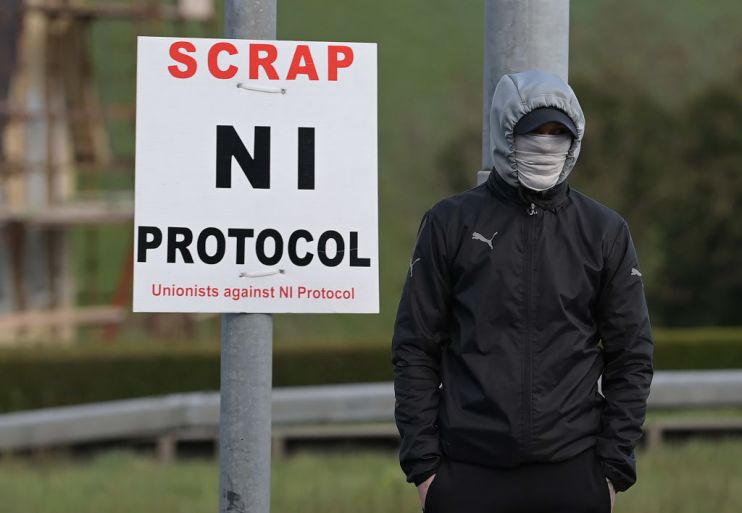The Northern Ireland Protocol was only ever a placeholder to get Brexit over the line – now the real work begins

Mention Northern Ireland to a British politician and he or she will edge towards the door.
With some notable exceptions such as John Major and Peter Mandelson, our leaders have tended to regard Northern Ireland as a strange land where normal rules do not apply: sectarian divisions they don’t understand and political parties which don’t follow the usual left/right ideology.
Many, though they daren’t admit it, echo the words of Reggie Maudling at the end of his first visit as Home Secretary: “For God’s sake bring me a large Scotch. What a bloody awful country.”
It was always going to be difficult to reconcile the island of Ireland with Brexit. Although Ireland is not in the EU’s Schengen travel zone, the single market must still be policed and in order to protect it, the EU has long insisted on some kind of post-Brexit border which would either have to fall between Northern Ireland and the Republic, or in the middle of the Irish Sea. Bot situations are intolerable given the tumultuous history of the Troubles.
So was born the Northern Ireland protocol. Northern Ireland would remain within the EU single market for goods, thereby avoiding a hard land border which would run contrary to the Good Friday Agreement, but necessitating one in the Irish sea.
As many predicted, the agreement is unworkable. Last week, Boris Johnson and his ministers sought to invoke the protocol’s Article 16, which allows parts of it to be unilaterally overridden. Meanwhile, Brexit negotiator Lord Frost will settle in to spend the summer renegotiating the document with the EU.
The European Commission was unimpressed, with president Ursula von der Leyen refusing to be drawn back to the negotiation table. What is strikingly obvious to most observers is neither the EU nor the UK ever really left their seats when it came to Northern Ireland. The Protocol in many ways feels like it was a placeholder in order to get Brexit over the line, while hoping a miracle would drop from the sky to sort out the thorny issue of Ireland.
The brutal reality is there is no answer. No amount of negotiation, the sacred liturgy of the EU, can erase the fact that there must be a hard border somewhere, and it is simply unacceptable for that to be in the Irish Sea, in other words, within the UK. The unionist parties in Northern Ireland would not stand for it nor would any British Government worth its salt.
The protocol was simply a device to kick the Ulster can down the road.
The facts are unavoidable: the UK voted by a majority to leave the EU; the majority in Northern Ireland wishes to remain part of the United Kingdom; and the single market requires a delineation, an outer edge.
The EU Commission will not sign away their powers of control over entry, which an open border with Northern Ireland would represent: to do so would be effectively to subcontract entry into the EU to the UK Border Force.
There are practical problems too. The new DUP leader Sir Jeffrey Donaldson has threatened that the devolved government at Stormont will not enforce border and customs checks between Great Britain and Northern Ireland. In a pugnacious timbre peculiar to politics in Northern Ireland, he told the Times, “If the government doesn’t live up to those commitments and if the outcome fails to remove the Irish Sea border then… there is no way we can work and co-operate on a North South basis when the Irish government and the EU are undermining our relationship with Great Britain.”
Sellar and Yeatman remarked that Gladstone tried to tackle the Irish question, but “whenever he was getting warm, the Irish secretly changed the question”.
This time, the question is clear: how does the EU accommodate a land border between a member state and a former member state which remain deeply economically and socially interlinked? There are no easy answers, only hard choices. There is one sure thing: it will take a diplomatic duo more subtle and adept than Johnson and Frost to find a way forward which is acceptable to all parties. It’s hard to see beyond a hard land border at the conclusion; but how can that be dressed up like a celebration cake rather than someone’s humble pie?